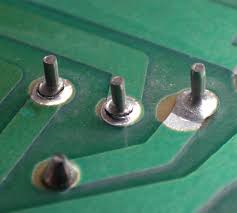
Seeing surface effects when using lead-free solder is not an unusual occurrence. There are many factors that could be causing texture on the solder joints after reflow.
The following are several of the more common factors that could be contributing to this defect:
- Thermal profile used, peak temperature and cool down rate
- Metal finishes on the parts that were soldered, dissolution occurs which can impact color
- Reflow atmosphere
- Physical or chemical properties of the flux, some fluxes react more with the solder surface than others
- Flow properties of the flux during the reflow process, some fluxes flow more rapidly than others, giving extended exposure to oxygen
- Excessive oxidation of the parts to be soldered
- Shelf life of the paste or how the paste was handled prior to use
Keep in mind that while the surface of the board may look frosty, discolored, or be demonstrating shrinkage effects this does not necessarily point to a reliability issue. Instead the solder joint may remain in excellent working condition with adequate intermetallic bonding.
If you suspect that there may be a reliability issue associated with the appearance you will need to do some pull/shear testing to examine the bond layers. Use a quality pair of shears for the most accurate results. (
https://gokimco.com/search?form_key=ViRkrOmJrsyABtEG&q=shear) If there is a problem with the bond layers, examining the reflow process for problems and / or changing to a different solder paste can correct the problem.
GoKimco has a wide variety of solder pastes so that you are sure to find one that will sort out this issue. Visit
https://gokimco.com/solder-flux-mask/solder-paste.html.
 Seeing surface effects when using lead-free solder is not an unusual occurrence. There are many factors that could be causing texture on the solder joints after reflow.
The following are several of the more common factors that could be contributing to this defect:
Seeing surface effects when using lead-free solder is not an unusual occurrence. There are many factors that could be causing texture on the solder joints after reflow.
The following are several of the more common factors that could be contributing to this defect:
